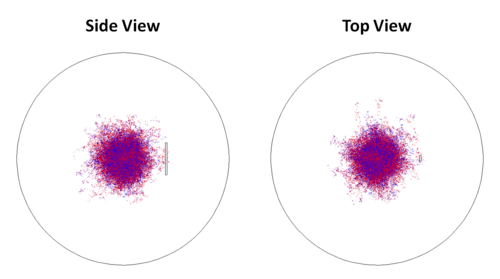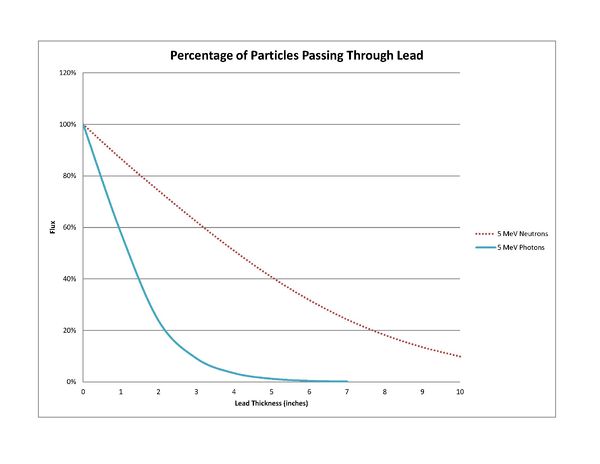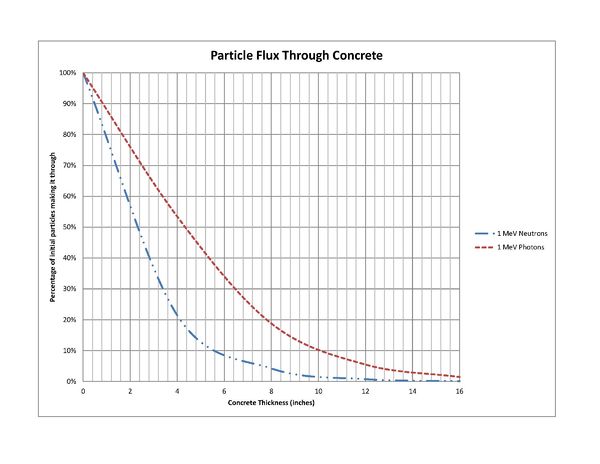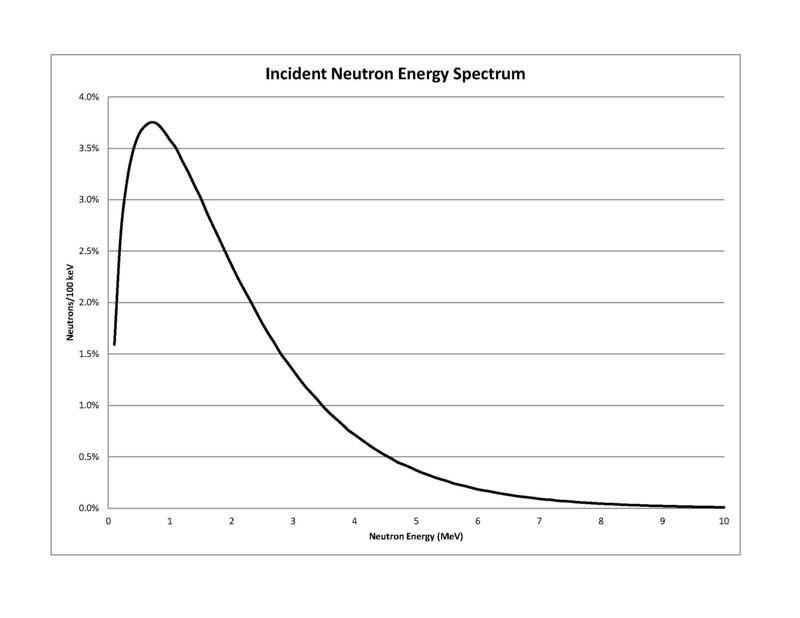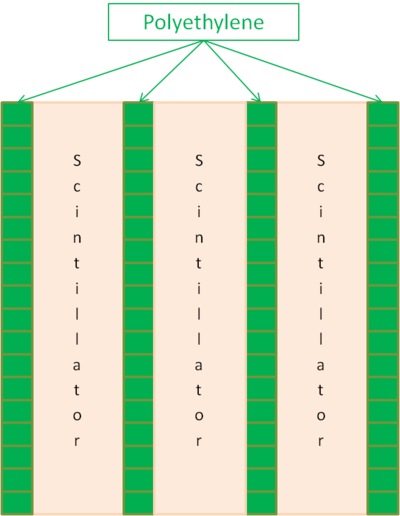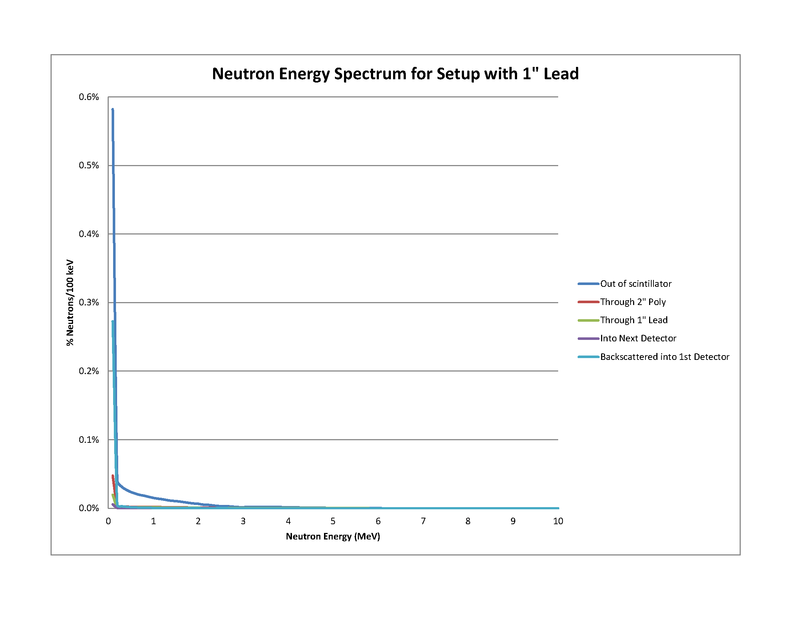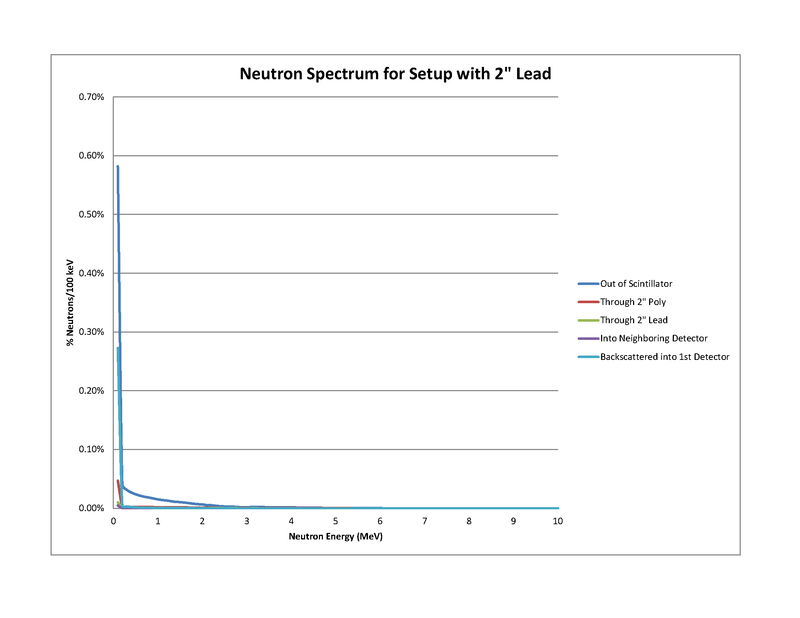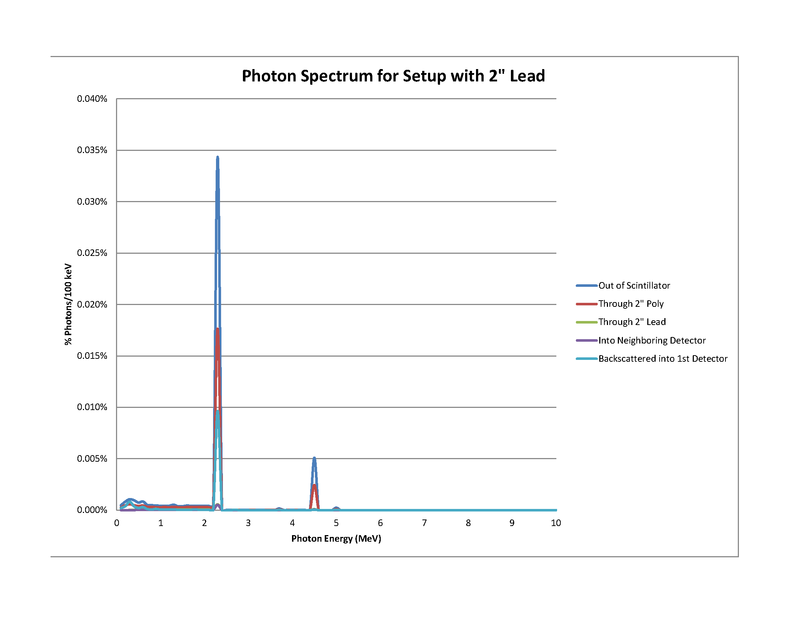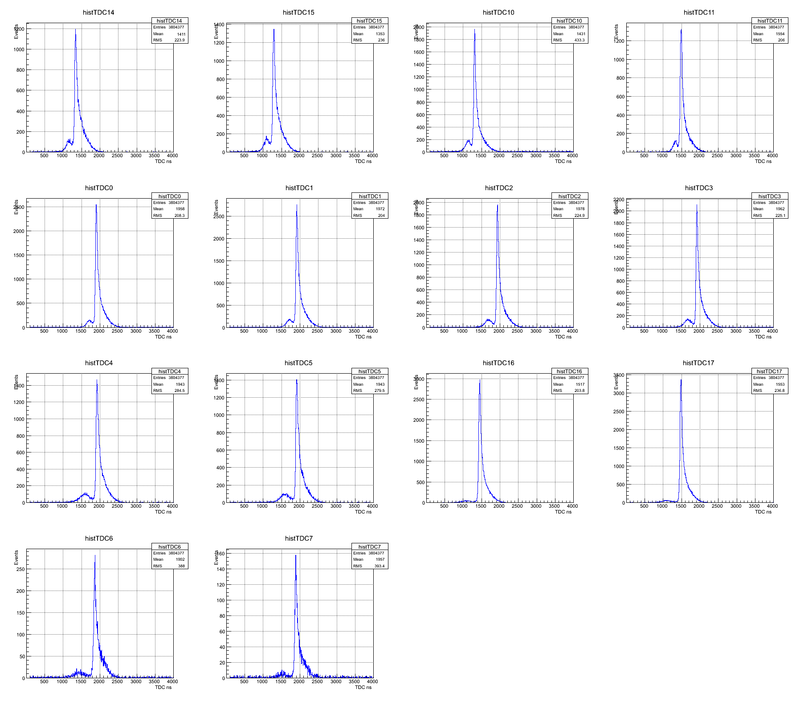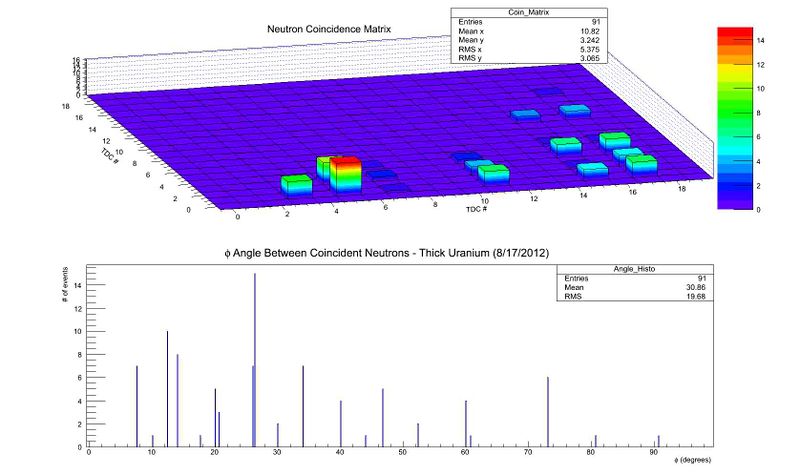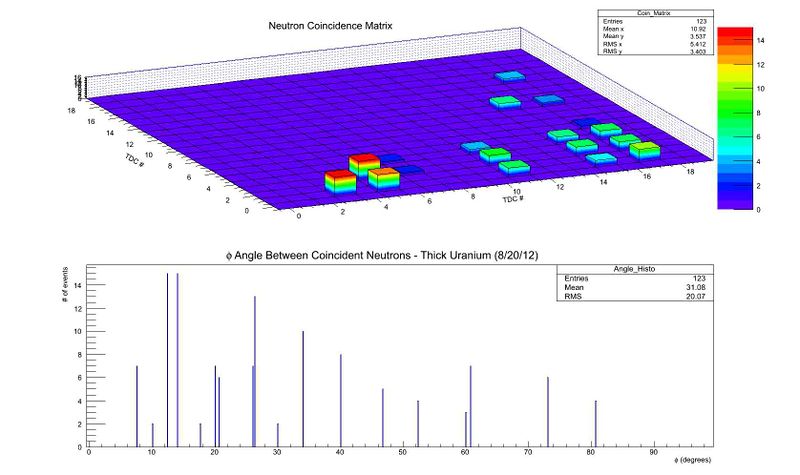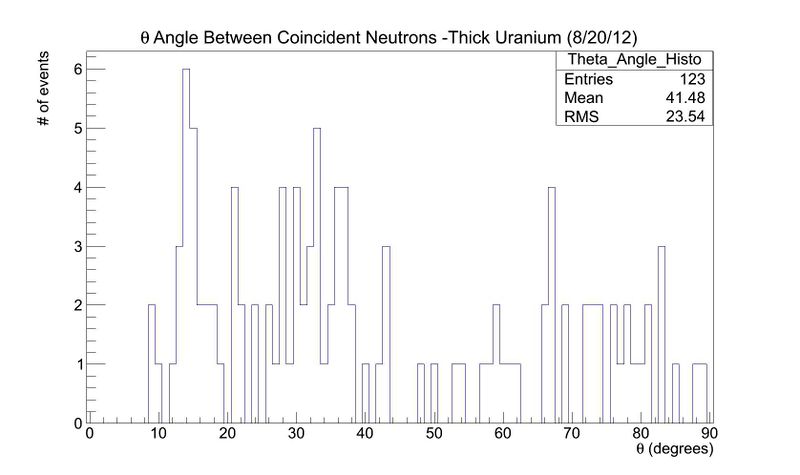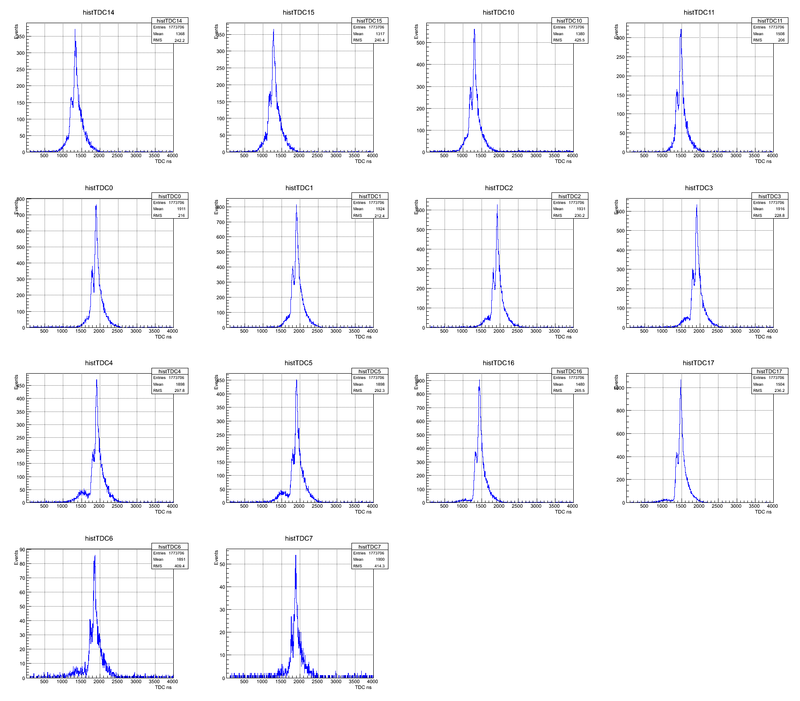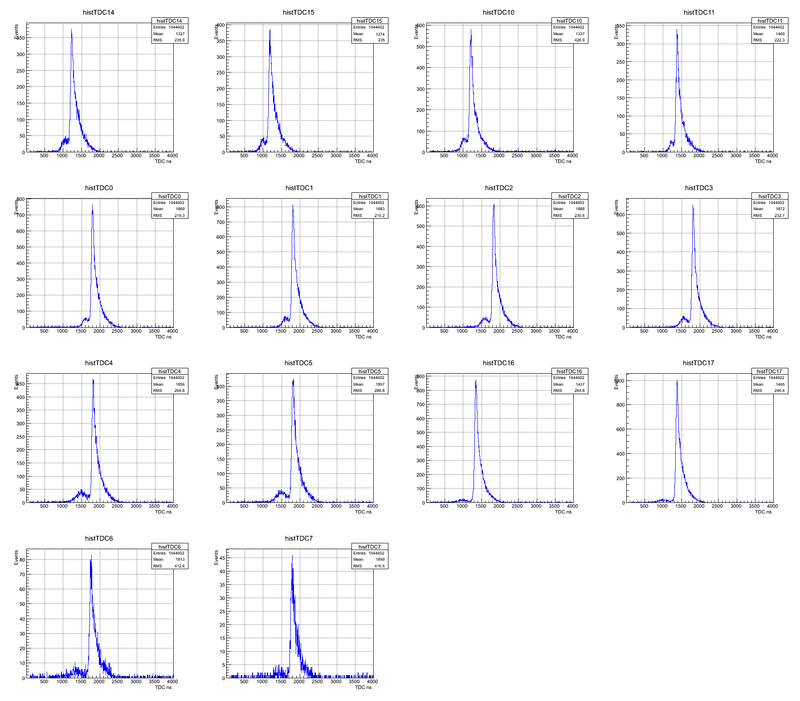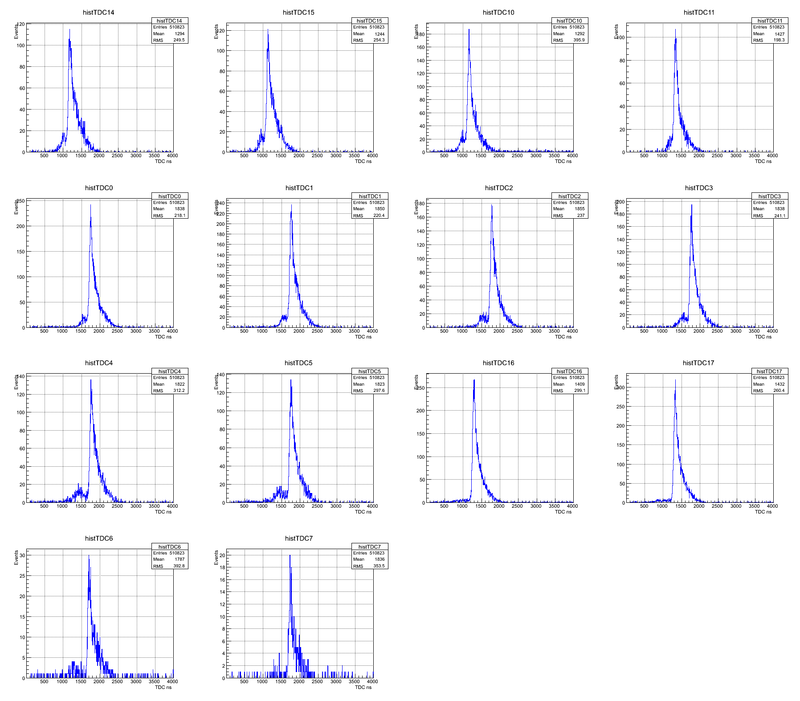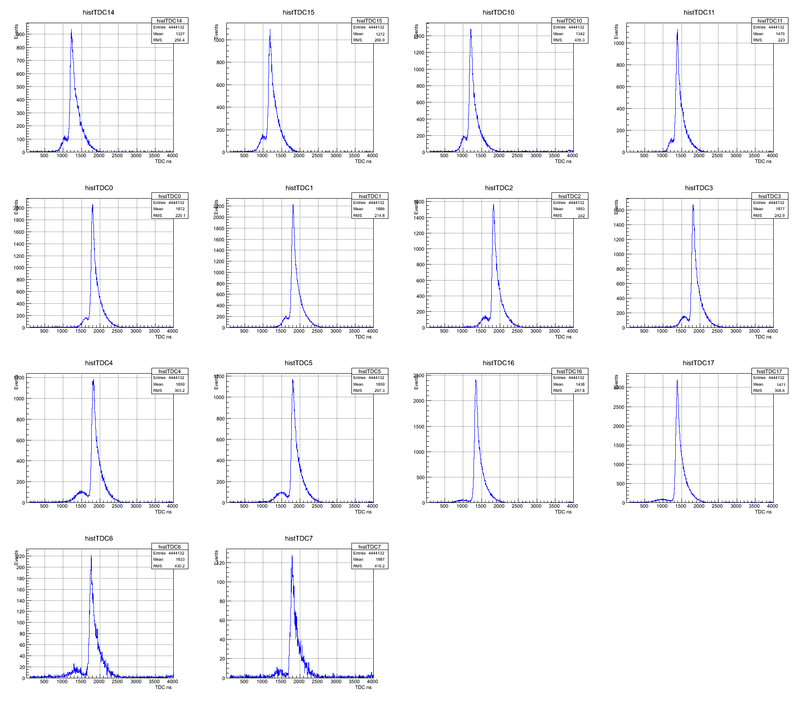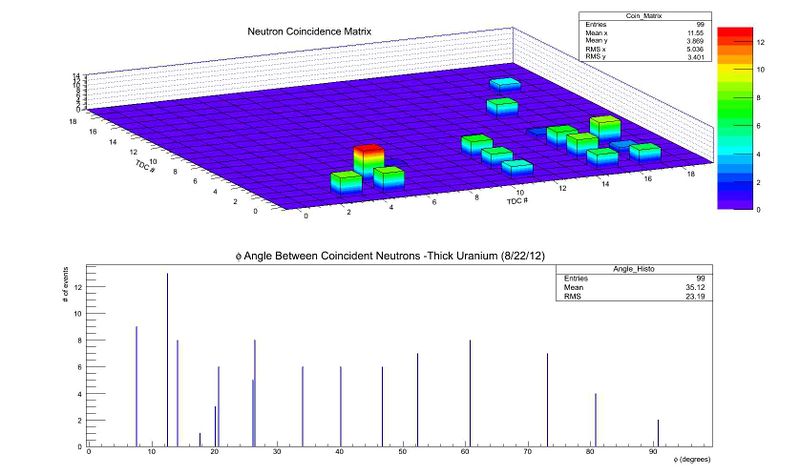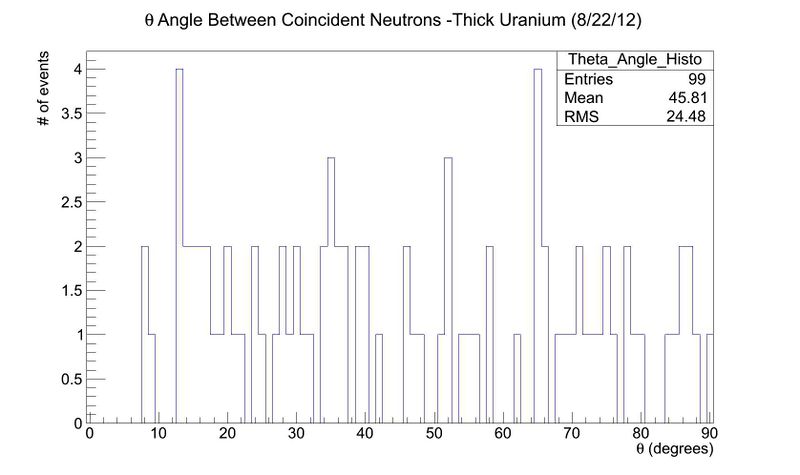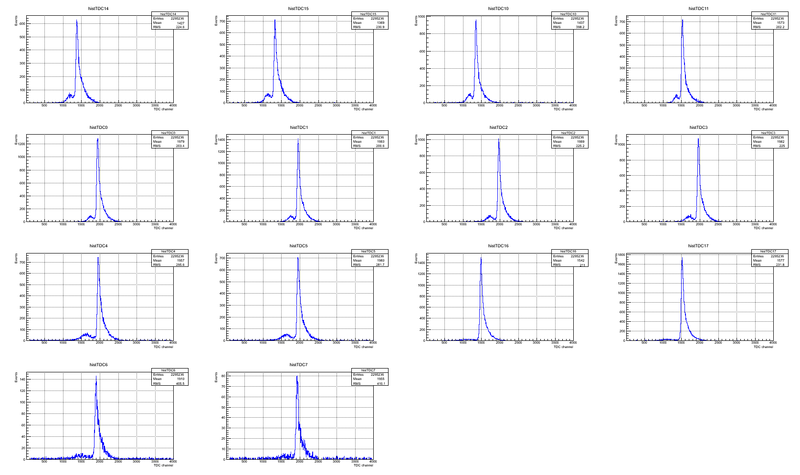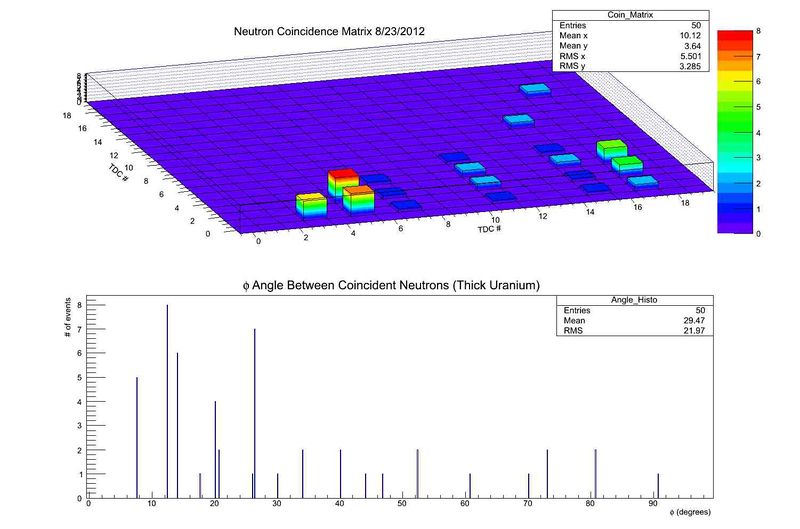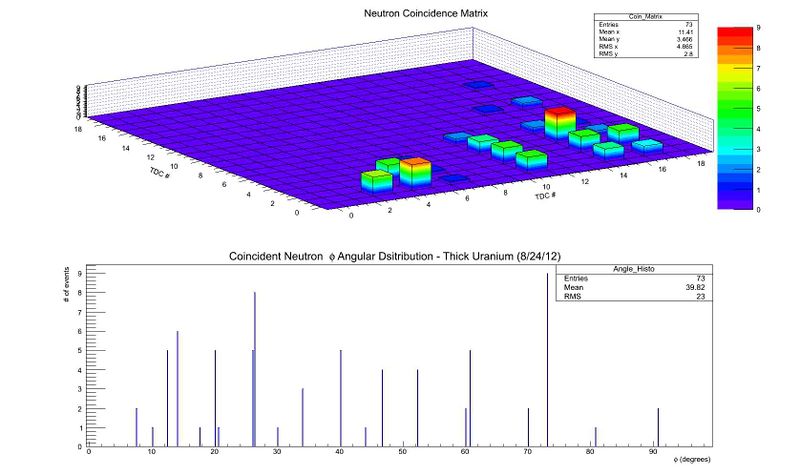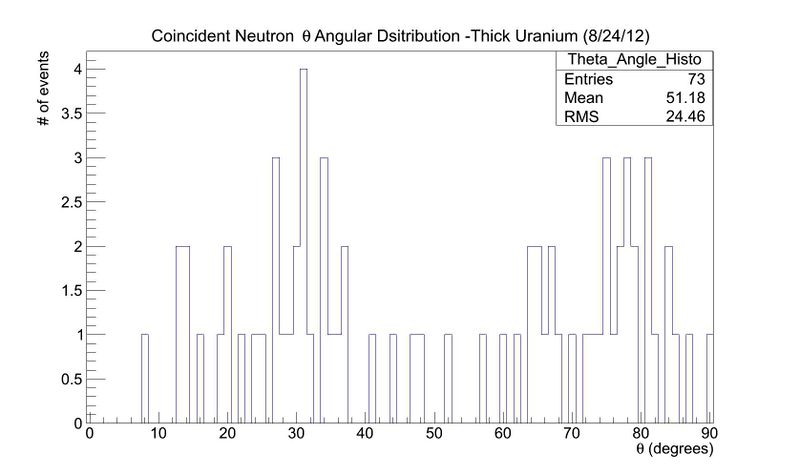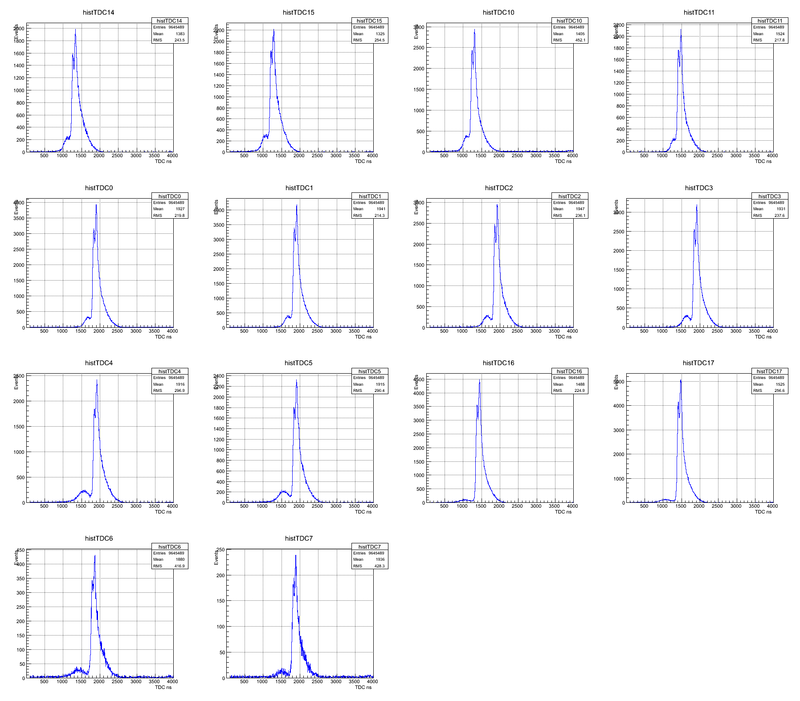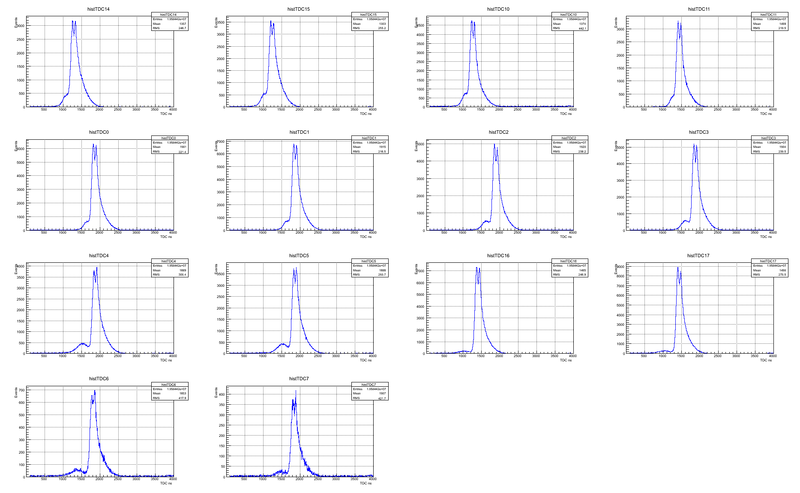Difference between revisions of "2-Neutron Correlation"
(→8/17) |
|||
| Line 81: | Line 81: | ||
[[File:PhotonEnergySpectrum2Pb.jpg | 800px]] | [[File:PhotonEnergySpectrum2Pb.jpg | 800px]] | ||
| − | =Neutron Detector TDC Spectra | + | =Neutron Detector TDC Spectra Thick Uranium Target= |
==8/17== | ==8/17== | ||
| Line 91: | Line 91: | ||
==8/20== | ==8/20== | ||
| − | [[File:TDC8_20.png | | + | [[File:TDC8_20.png | 800 px]] |
| + | |||
| + | [[File:phi8_20.png | 800 px]] | ||
| + | |||
| + | [[File:theta8_20.png | 800 px]] | ||
==8/21== | ==8/21== | ||
| − | [[File:TDC8_21.png | | + | [[File:TDC8_21.png | 800 px]] |
===4143=== | ===4143=== | ||
| − | [[File:TDC8_21_4143.png | | + | [[File:TDC8_21_4143.png | 800 px]] |
===4144=== | ===4144=== | ||
| − | [[File:TDC8_21_4144.png | | + | [[File:TDC8_21_4144.png | 800 px]] |
===4145=== | ===4145=== | ||
| − | [[File:TDC8_21_4145.png | | + | [[File:TDC8_21_4145.png | 800 px]] |
===4146=== | ===4146=== | ||
| − | [[File:TDC8_21_4146.png | | + | [[File:TDC8_21_4146.png | 800 px]] |
==8/22== | ==8/22== | ||
| − | [[File:TDC8_22.png | | + | [[File:TDC8_22.png | 800 px]] |
| + | |||
| + | [[File:phi8_22.png | 800 px]] | ||
| + | |||
| + | [[File:theta8_22.png | 800 px]] | ||
| + | |||
| + | ==8/23== | ||
| + | [[File:TDC8_23.png | 800 px]] | ||
| + | |||
| + | [[File:phi8_23.png | 800 px]] | ||
| + | |||
| + | [[File:theta8_23.png | 800 px]] | ||
| + | |||
| + | ==8/24== | ||
| + | [[File:TDC8_24.png | 800 px]] | ||
| + | |||
| + | [[File:phi8_24.png | 800 px]] | ||
| + | |||
| + | [[File:theta8_24.png | 800 px]] | ||
==8/17 - 8/20== | ==8/17 - 8/20== | ||
| − | [[File:TDC8_17_20.png | | + | [[File:TDC8_17_20.png | 800 px]] |
==8/17 - 8/21== | ==8/17 - 8/21== | ||
| − | [[File:TDC8_17_21.png | | + | [[File:TDC8_17_21.png | 800 px]] |
==8/17 - 8/22== | ==8/17 - 8/22== | ||
| − | [[File:TDC8_17_22.png | | + | [[File:TDC8_17_22.png | 800 px]] |
Revision as of 16:59, 2 October 2012
Big Detector Solid Angle Calculations
- MCNPX Simulation
- 14 MeV neutron source, emitted isotropically ()
- Detector placed 1m away from source
- face of the detector is 15.24cm x 76.2cm, and 3.6cm deep
The solid angle can be found from the number of particles hitting the detector as:
- Results
- Out of 1E9 neutrons generated, 8618287 neutrons hit the detector
-
- if the detector is placed 70cm away from the source,
- if the detector is placed 65cm away from the source,
-
- As a test to verify our results
- We change the detector size to 2cm by 2cm and used 1E9 neutrons again
- 32061 neutrons struck the detector
- And, as a second test to verify our results
- We change the detector size to 1cm by 1cm and used 1E9 neutrons again
- 7965 neutrons struck the detector
- Now, what neutron singles rate into the detector should correspond to 1 fission per pulse?
- If we have 1 fission per pulse and each fission emits on average 2.3 neutrons, we should expect 2.3 neutrons/pulse
- The number of neutrons hitting the detector per pulse is found as
- @ 1 meter => 0.0198 neutrons hitting the detector per pulse
- @ 70 cm => 0.0379 neutrons hitting the detector per pulse
- Taking into account the efficiency of the detector , the number detected per pulse can be found as
- @ 1 meter from source => () neutrons detected per pulse
- @ 70 cm from source => () neutrons detected per pulse
Neutron and Photon Flux Through Lead
Using MCNPX, a simulation was done to determine how much of the neutrons and photons from the target will be blocked by various thickness of lead. With a monochromatic pencil beam of incident particles, the following results illustrate how much of the initial beam actually made it through the lead.
Neutron and Photon Flux Through Concrete
Detector Cross-Talk
Using MCNPX, I am trying to simulated the cross-talk we could expect between the big detectors. I used a fission neutron energy spectrum given in MCNPX, shown below.
These neutrons are incident upon a plastic scintillator and I will look at the neutrons and photons coming out of the scintillator's sides perpendicular to the incident beam. The first case I will look at is where the detectors are placed with only polyethylene between them, as illustrated below.
This results in a neutron and photon energy spectrum as follows.
The next case I will look at is where we put a layer of lead between the polyethylene between the detectors, as shown in the schematic below.
The results for this setup using 1 inch of lead between the detectors is as follows.
And, the results for this setup using 2 inches of lead between the detectors is as follows.
Neutron Detector TDC Spectra Thick Uranium Target
8/17
8/20
8/21
4143
4144
4145
4146
8/22
8/23
8/24
8/17 - 8/20
8/17 - 8/21
8/17 - 8/22
